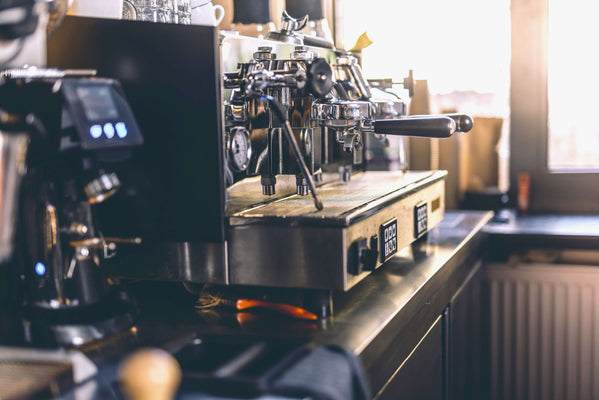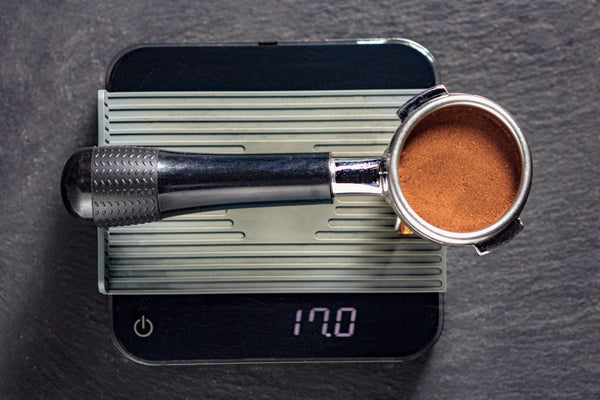
Coffee 101: Milk's Composition and Steaming
tai attitude7 min read
Milk-based coffee is very popular. As it is, milk is the third most used ingredient in coffee shops, following water and coffee beans.
Milk preparation, particularly milk steaming, is a crucial step towards quality milk-based coffee, be it for cappuccino, caffè latte, etc.
The topic of milk can get expansive, and its perspective varies depending on how we approach it. In this article for baristas, we will focus particularly on the composition of various types of milk and its properties in milk-steaming.
Let's delve into the details.
Milk's composition
In this section, cow’s milk is used as the main reference.
The compositions in cow's milk are the following, from most abundant to least: water, lactose (milk sugar), proteins, and lipids.
Cow's milk composition:

1g = 1 mL Chart displays the average cow's milk composition. Data extracted from the attached research link.
Water makes up 87.5% of milk, giving it a more dilute texture and serving as a universal solvent to bind everything in milk together.
Lactose is the second most abundant compound in milk, comprising approximately 4.88%. It is the main carbohydrate in cow's milk, imparting a naturally sweet taste.
Proteins in milk make up about 3.35% of the total. These proteins consist of two main groups in the ratios of caseins (80%) and whey proteins (20%). Protein is the crucial element responsible for creating milk foam.
Lipids in milk are about 2.81%. Collectively, these fats and oils contribute greatly to milk's texture. The lipid content plays a role in affecting the quality of milk foam.
Low-fat or skimmed milk is cow's milk with an average lipid content reduction from 2.81 g/100 mL to 0.08 g/100 mL, representing at least 97% of its total lipid content removal.
Milk also contains other substances in very small traces, such as pigments, enzymes, vitamins, minerals, gases, etc. These do not impact the milk-steaming process by much.
How milk steaming works
A barista performs the milk-steaming task to achieve two key actions:
i. Introducing atmospheric air into the milk to create foam
ii. Using hot steam to heat up the milk
The correct way to achieve both key actions:
The steam tip is carefully positioned on the surface of cold milk (half-submerged) and turned on. The powerful hot steam whips through the cold milk, inducing a vortex that draws atmospheric air into the milk. Simultaneously, the hot steam heats the milk, resulting in microfoam-hot milk.
The incorrect ways are:
The steam tip is placed above the cold milk surface (without submerging it), and when turned on, the induced vortex draws in excessive atmospheric air into the milk. The hot steam will heat up the milk, resulting in frothy-hot milk.
Or
The steam tip is placed under the cold milk (fully submerged); when turned on, the milk will spin without creating a vortex, preventing atmospheric air from being drawn into the milk. The hot steam will heat up the milk, resulting in foamless, hot milk.
Carbohydrate's breakdown increases sweetness
The simpler the carbohydrates, the sweeter they are.
Heating helps break down complex carbohydrates' compounds into simpler ones, enhancing the sweetness and therefore the palatability of the food. Think of raw carrot vs. boiled carrot, for instance.
Milk's naturally occurring lactose is a simple carbohydrate (disaccharide) that is mildly sweet. When heated, some lactose breaks down into glucose and galactose (monosaccharides), making it sweeter.
In other words, hot milk is sweeter than cold milk, making it perfect for coffee. It helps mask the bitterness of espresso or brewed coffee, creating a more enjoyable beverage.
Protein is the cause of foaming
Protein itself has a rather complex compound structure. Essentially, protein compound structure has a hydrophilic nature on one side and a hydrophobic nature on the other.
Hydrophilic: binds with water (H2O).
Hydrophobic: repels water (H2O); binds with air or lipids.
Milk-steaming introduces both atmospheric air and heat into the cold milk, which leads to the partial breakdown of the proteins as follows:
The hydrophilic side of proteins that bind with water remains unaffected by atmospheric air or heat.
However, heat enables proteins' hydrophobic side to bind with newly introduced atmospheric air.
 Image credit: decodingdelicious.com
Image credit: decodingdelicious.com
The illustration above shows proteins' unique properties to bind with water on one side and with air on the other. Protein in milk is the reason why foaming is possible.
Do note that heating above 82 °C (180 °F) will cause the proteins to completely break down, which leads to the loss of their hydrophobic properties, preventing them from effectively holding air (foam) any longer.
This explains why baristas often find that the quality of microfoam diminishes when milk is steamed excessively hot.
In the regard above, to achieve the best microfoam, it is wise to introduce air at the beginning of milk-steaming and avoid overheating it. Simply because protein holds air (foam) best when partially broken down and loses its hold-air (foam) properties when completely broken down.
Lipid reduces foaming yet contributes texture
In milk-steaming, air and proteins do not just bind so easily, as it turns out that in milk, lipids are also present. These lipids compete with air to bind to the hydrophobic side of the protein.
In addition, lipids, on their own, contribute to a richer texture for milk, which enhances both the pouring and drinking experience.
Based on lipids being inversely proportional to foaming yet proportional to texture, to put it in simpler terms:
Milk with a higher lipid content holds less air (foam), but the foam is velvetier and silkier.
Milk with a lower lipid content holds more air (foam), but the foam is drier and stiffer.
For example,
Steaming whole or full cream milk produces less foam quantity but is velvetier and silkier, making it ideal for latte art pouring and giving the beverage a richer mouthfeel.
Contrarily, steaming low-fat or skim milk results in more foam quantity but is drier and stiffer, making latte art pouring less ideal, and the beverage tastes lighter in mouthfeel.
The microfoam state is temporarily
Microfoam is a temporal state where gaseous air bubbles suspend in milk liquid.
Air is gas; it is not bound to gravity. As such, as soon as milk-steaming is done, air will gracefully escape the milk liquid over time. Unfortunately, microfoam will not last.
Gravity pulls liquid down; small air bubbles rise to the top and combine to form larger bubbles until the air pressure is greater than the hydrophobic bond of protein, which bursts the bubble (leaving the milk liquid).
For the reason above, a barista would want to pour latte art immediately after milk-steaming for the best results. Allowing the microfoam to diminish in the cup, not in the milk pitcher.
 Latte art is the art of plating for coffee, if you will.
Latte art is the art of plating for coffee, if you will.
Milk alternatives
Plant-based milk alternatives (abbreviated as PBMAs) are technically not milk but water extracts from grains, legumes, drupes, nuts, or seeds that are used as substitutes for cow’s milk.
PBMAs are a popular choice for many people for various reasons. The flavour is very subjective, as each is delicious in its own right. What we would like to emphasise is the microfoam qualities they create in the hands of a skilled barista. Below are five popular PBMAs in comparison and how each differs in milk-steaming experience.

Chart displays average values for the composition of different milks. Data extracted from the attached research link.
Oat milk and rice milk are both grain-based. They have a much higher carbohydrate content than cow's milk, thereby being notably sweeter in taste, especially when heated. Oat milk has a balanced ratio of protein and lipid content, making it suitable for milk-steaming, although different. Rice milk, however, has the lowest protein content among milk alternatives, which rather limits its foaming properties.
Soy milk is legume-based and therefore very high in protein. It is the only PBMA that has an impressively comparable protein quantity to cow's milk. While its lipid content is lower, it is not as dramatic as low-fat cow's milk, for instance. Creating quality milk foams with soy milk is definitely possible.
Almond milk is nut-based. It has a lower protein and a higher lipid content. It is the lowest in carbohydrates among milk alternatives, making it the least sweet. Steaming almond milk will require more atmospheric air injection due to its lower available protein, but thanks to its higher lipid content, the foaming properties can be velvety.
Coconut milk is drupe-based. It is the second-lowest sugar content option and also the second-lowest in protein, but it has the highest lipids of all, even higher than cow's milk. Its foaming properties are the most limited because of its extremely low protein-to-lipid ratio.
In summary
Milk-steaming is a process where the barista introduces atmospheric air and temperature into the cold milk to create temporal microfoam-hot milk, increasing its palatability.
The primary carbohydrate in cow's milk is lactose, which provides a natural sweet taste. In plant-based milk alternatives, lactose is absent; their sweetness comes from different sugars. Heating increases the sweetness of these milks.
Proteins in milk are responsible for foaming. Protein compounds have the unique property of having one side bind to water and another side bind to air (or lipids). The higher the protein content, the higher the potential for foaming. Vice versa.
Lipids compete with air to bind proteins. On their own, lipids enhance the texture of milk. Thus, a higher lipid content decreases foaming but increases the velvety and silky feel. The opposite holds true.



